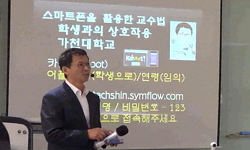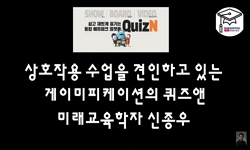Brand community refers to social groups combining by those who use the same brand products. On the one hand, brand with its own community could effectively assemble consumers together and enhance their brand loyalty. On the other hand, as the emergenc...
http://chineseinput.net/에서 pinyin(병음)방식으로 중국어를 변환할 수 있습니다.
변환된 중국어를 복사하여 사용하시면 됩니다.
- 中文 을 입력하시려면 zhongwen을 입력하시고 space를누르시면됩니다.
- 北京 을 입력하시려면 beijing을 입력하시고 space를 누르시면 됩니다.

브랜드커뮤니티 내 상호작용성이 브랜드 충성도에 미치는 영향:중국 온라인커뮤니티를 대상으로 = A Study on the Impact of Brand Community Interaction Model on Brand Loyalty: Focusing on Chinese Online Brand Community
한글로보기부가정보
다국어 초록 (Multilingual Abstract)
This paper takes the online automobile brand community as the example, importing ‘interactivity’, the concept of sociology, into online brand community study. It follows the logical way as ‘How does interactivity embody among the online communities → How about its deepening process? → What the results of interactivity will be?’, that is, ‘formation of the relationship (Interaction)- deepening of the relationship (Community commitment)-result of the relationship(brand loyalty)’, makes systematic study through the method of combining theory and case analysis together, and puts forward the marketing strategic direction for online brand communities.
The results are as follow: online interaction within the brand community can point out that the components of social interaction are mutuality and reciprocity; while the components of individual interaction are response and enjoyment. This study expected to find the starting point for enhancement of brand and community relationships, i.e. the four constituents of interactions. As it is impossible to establish relationships without interactions, it is highly important both theoretically and practically to identify the constituents of the interactions within a brand community. In this study, commitment of online brand community is considered as a medium factor of brand loyalty and oppositional brand loyalty. With the deepening process of the relationship, it will have an influence on brand loyalty ultimately. It shows the necessity to regard brand as the differentiated competitive advantages of an enterprise and convey to enterprise that plan to establish brand management strategies that brand community is an important brand management tool. In particular, the further division of identification into community identification and brand identification shows that the identification- based brand strategy needs differentiation.
First of all, the results of this study will help companies to understand profoundly the value of online brand community and strengthen their conviction on operating online communities; secondly, it will help the community managers more deeply understand different effects that interaction impacted on the purchasing behaviors of online brand community. It also provides the new channel and management foundation for the companies engaging in attracting and maintaining loyal customers, and in order to offers business strategy and suggestions for community mangers or companies to promote the interaction between members of their communities, which will eventually contribute to shaping of brand image.
Brand community refers to social groups combining by those who use the same brand products. On the one hand, brand with its own community could effectively assemble consumers together and enhance their brand loyalty. On the other hand, as the emergence of network communication platform, online communities come into being which are similar to real communities. However, there are also some brand-themed ones, among those numerous online communities, which have both online and brand community characteristics. The structure of brand community is a 3-element map composed of ‘consumer-brand-consumer’ (Muniz and O’Guinn, 2001). However, as the existence of network communication platforms, those online interactive activities among different brand communities will have an influence not only on both the relationship between consumers and also the relationship between consumers and brands.
This paper takes the online automobile brand community as the example, importing ‘interactivity’, the concept of sociology, into online brand community study. It follows the logical way as ‘How does interactivity embody among the online communities → How about its deepening process? → What the results of interactivity will be?’, that is, ‘formation of the relationship (Interaction)- deepening of the relationship (Community commitment)-result of the relationship(brand loyalty)’, makes systematic study through the method of combining theory and case analysis together, and puts forward the marketing strategic direction for online brand communities.
The results are as follow: online interaction within the brand community can point out that the components of social interaction are mutuality and reciprocity; while the components of individual interaction are response and enjoyment. This study expected to find the starting point for enhancement of brand and community relationships, i.e. the four constituents of interactions. As it is impossible to establish relationships without interactions, it is highly important both theoretically and practically to identify the constituents of the interactions within a brand community. In this study, commitment of online brand community is considered as a medium factor of brand loyalty and oppositional brand loyalty. With the deepening process of the relationship, it will have an influence on brand loyalty ultimately. It shows the necessity to regard brand as the differentiated competitive advantages of an enterprise and convey to enterprise that plan to establish brand management strategies that brand community is an important brand management tool. In particular, the further division of identification into community identification and brand identification shows that the identification- based brand strategy needs differentiation.
First of all, the results of this study will help companies to understand profoundly the value of online brand community and strengthen their conviction on operating online communities; secondly, it will help the community managers more deeply understand different effects that interaction impacted on the purchasing behaviors of online brand community. It also provides the new channel and management foundation for the companies engaging in attracting and maintaining loyal customers, and in order to offers business strategy and suggestions for community mangers or companies to promote the interaction between members of their communities, which will eventually contribute to shaping of brand image.
국문 초록 (Abstract)
본 연구는 기업의 마케팅 및 브랜드 관리의 주요 수단으로 대두되고 있는 온라인 브랜드 커뮤니티 내에서 어떠한 상호작용을 통해 관계가 몰입되어 브랜드 충성도에 영향을 미치는지를 밝...
본 연구는 기업의 마케팅 및 브랜드 관리의 주요 수단으로 대두되고 있는 온라인 브랜드 커뮤니티 내에서 어떠한 상호작용을 통해 관계가 몰입되어 브랜드 충성도에 영향을 미치는지를 밝히고, 이를 통해 중국 온라인 환경에서 상호작용성의 전략적 브랜드 관리 활용방안에 관한 시사점을 제공하고자 하였다. 중국 대표적인 자동차 전문 웹사이트인 愛卡汽車論壇(http://club.xcar.com.cn/)의 브랜드별 자동차 커뮤니티 회원을 대상으로 총 250부를, 구조방정식 모델을 기반으로 한 AMOS 20을 이용하여 실증 분석하였다. 연구 결과, 상호작용 구성요인은 상호연대감, 상호호혜성, 반응성, 즐거움으로 도출되었다. 이러한 상호작용성들이 커뮤니티 몰입에 미치는 영향을 확인하였고, 동시에 커뮤니티에서 나타나는 몰입현상이 해당 브랜드 충성도와 경쟁브랜드의 대항적 충성도로 전이될 수 있다는 것을 실증하였다. 즉, 온라인 브랜드 커뮤니티를 통한 다양한 충성도 제고의 선순환 과정을 검증한 것이다. 이를 통해 중국 온라인 환경에서 상호작용성의 전략적 브랜드 관리 활용방안에 관한 시사점을 제공하고자 한다. 강력한 브랜드 커뮤니티를 개발하고 구축하는 것은 고객과의 관계 마케팅을 실현하는 중요한 수단이 될 수 있음을 인식하여야 하고, 프로슈머적 성향이 강한 네티즌의 영향력을 전략적으로 잘 활용해야 한다. 또한, 한국기업들은 지속적으로 인터넷상의 구전을 모니터링 하여야 한다
참고문헌 (Reference)
1 한상일, "플로우가 개인형 커뮤니티 서비스의 재사용 의도에 미치는 영향" 한국기업경영학회 15 (15): 133-153, 2008
2 고은주, "패션 온라인 커뮤니티 특성이 브랜드 충성도에 미치는 영향: 라이프스타일 집단 간 비교" 한국마케팅과학회 16 (16): 87-106, 2006
3 배영준, "중국 소비문화의 5 가지 신드롬" LG 경제연구원 2006
4 송창석, "인터넷상의 상호작용성 제고방안에 관한 연구" 한국마케팅학회 14 (14): 69-95, 1999
5 홍성태, "이동통신 서비스에 대한 고객 만족에 미치는 몰입의 매개적 효과" 한국기업경영학회 17 (17): 191-206, 2010
6 이태민, "유비쿼터스 환경에서 상호작용성 관리를 통한 모바일 마케팅 성공 전략" 한국학술정보(주) 2005
7 최동궁, "웹 특성 변수가 웹 브랜드자산 형성요인에 미치는 영향에 관한 연구" 한국마케팅학회 17 (17): 123-146, 2002
8 강명수, "온라인 커뮤니티 형성과 유지에 관한 연구-규범적 몰입과 감성적 몰입의 매개역할을 중심으로-" 대한경영학회 18 (18): 67-87, 2005
9 김재욱, "온라인 커뮤니티 마케팅 활동과 친커뮤니티 행동간의 관계에 있어서 몰입의 매개역할" 한국마케팅학회 17 (17): 77-98, 2002
10 한상린, "온라인 브랜드 커뮤니티의 활동 및 유형이 브랜드 충성도에 미치는 영향" 한국마케팅관리학회 11 (11): 131-152, 2006
1 한상일, "플로우가 개인형 커뮤니티 서비스의 재사용 의도에 미치는 영향" 한국기업경영학회 15 (15): 133-153, 2008
2 고은주, "패션 온라인 커뮤니티 특성이 브랜드 충성도에 미치는 영향: 라이프스타일 집단 간 비교" 한국마케팅과학회 16 (16): 87-106, 2006
3 배영준, "중국 소비문화의 5 가지 신드롬" LG 경제연구원 2006
4 송창석, "인터넷상의 상호작용성 제고방안에 관한 연구" 한국마케팅학회 14 (14): 69-95, 1999
5 홍성태, "이동통신 서비스에 대한 고객 만족에 미치는 몰입의 매개적 효과" 한국기업경영학회 17 (17): 191-206, 2010
6 이태민, "유비쿼터스 환경에서 상호작용성 관리를 통한 모바일 마케팅 성공 전략" 한국학술정보(주) 2005
7 최동궁, "웹 특성 변수가 웹 브랜드자산 형성요인에 미치는 영향에 관한 연구" 한국마케팅학회 17 (17): 123-146, 2002
8 강명수, "온라인 커뮤니티 형성과 유지에 관한 연구-규범적 몰입과 감성적 몰입의 매개역할을 중심으로-" 대한경영학회 18 (18): 67-87, 2005
9 김재욱, "온라인 커뮤니티 마케팅 활동과 친커뮤니티 행동간의 관계에 있어서 몰입의 매개역할" 한국마케팅학회 17 (17): 77-98, 2002
10 한상린, "온라인 브랜드 커뮤니티의 활동 및 유형이 브랜드 충성도에 미치는 영향" 한국마케팅관리학회 11 (11): 131-152, 2006
11 이원준, "신상품의 유비쿼터스 상호작용 속성이 수용 및 확산에 미치는 영향" 서울대학교 대학원 2005
12 송창석, "쇼핑사이트의 상호작용성 제고방안에 관한 연구: 기업-소비자간 상호작용을 중심으로" 대한경영학회 16 (16): 6-1734, 2003
13 김병재, "브랜드 커뮤니티 상호작용을 통한 관계 성과에 관한 연구" 한국생산성학회 21 (21): 103-127, 2007
14 임종원, "브랜드 커뮤니티 내 관계 심화 과정에 관한 연구 - 커뮤니티 경로와 브랜드 경로를 중심으로 -" 한국마케팅학회 24 (24): 203-230, 2009
15 김용겸, "구조방정식모형의 효율적 활용을 위한 점검표의 개발" 한국기업경영학회 14 (14): 19-34, 2007
16 이수동, "가상환경에서 대 고객 및 고객간 관계결속의 선행변수와 결과변수에 대한 연구" 한국유통학회 5 (5): 1-19, 2001
17 嚴浩仁, "顧客忠誠的影響因素及其作用机制一一對移動通信服務市場的實証硏究" 浙江大學 2004
18 金立印, "虛擬品牌社群的價值維度對成員社群意識, 忠誠度及行為傾向的影響" 2 : 36-45, 2007
19 暢榕, "虛擬品牌社群昭究" 中國傳播大學出版社 2007
20 王新新, "品牌社群社會資本, 价値感知与品牌忠誠" 6 (6): 53-63, 2010
21 Dholakia, L. L., "lnteractivity and Revisits to Web-sites"
22 Ramani, G., "lnteraction Orientation and Firm Performance" 72 (72): 27-45, 2008
23 Reichheld, F., "Zero Defects: Quality Comes to Services" 105-111, 1990
24 Jones, T. O., "Why Satisfied Customers Defect" 73 (73): 88-99, 1995
25 Ouwersloot, H., "Who' Who in Braod Communities- and Why?" 42 (42): 571-585, 2008
26 Rothaermel, F. T., "Virtual Internet Communities and Commercial Success : Individual and Community-Level Theory Grounded in the Atypical case of Time Zone. com" 27 : 297-312, 2001
27 Agarwal, R., "Time Flies When You're Having Fun : Cognitive Absorption and Beliefs About Information Technology Usage" 24 : 665-694, 2000
28 Jang, H. Y., "The influence of on-line brand community characteristics on community commitment and brand loyalty" M E SHARPE INC 12 (12): 57-80, 200805
29 Algesheimer, R., "The Social Influence of Brand Community : Evidence from European Car Clubs" 69 (69): 19-34, 2006
30 Wu, G., "The Role of Perceived Interactivity in Interactive ad Processing" The University of Texas it Austin 2000
31 Hogg, M. K., "The Role of Aversion in Product/Brand Choice" 1997
32 Armstrong, A., "The Real Value of Online Corrmunities" 5 (5): 134-141, 1996
33 Cahn, D. D., "The Perceived Understanding Measurement" 1 : 122-125, 1984
34 Lee, T. M., "The Impact of Perceptions of Interactivity on Customer Trust and Transaction Intention in Mobile Commerce" 6 (6): 166-180, 2005
35 Casalo, L., "The Impact of Participation in Virtual Brand Communities on Consumer Trust and Loyalty" 31 (31): 775-792, 2007
36 Sharma, N., "The Impact of Communication Effectiveness and Service Quality on Relationship Commitment in Consumer, Professional Services" 13 (13): 151-170, 1999
37 Neuman, W. R., "The Future of the Mass Audience" Cambridge University Press 1991
38 Morgan, R. M., "The Comnitment-Trust Theory of Relationship Marketing" 58 (58): 20-38, 1994
39 Burgoon, J. K., "Testing the Interactivity Model Communication Process Partner Assessments and The Quality of Collaborative Work" 16 (16): 33-56, 1999
40 Anderson, J. C., "Structural Equation Modeling in Practice : A Review and Recommended Two-Step Approach" 103 (103): 411-423, 1988
41 Carlson, B. D., "Social Versus Psychological Brand Community : The Role of Psychological Sense of Brand Community" 61 : 284-291, 2008
42 Ashforth, B. E., "Social Identity Theory and the Organization" 14 (14): 20-39, 1989
43 McMillan, D., "Sense of Community : A Definition and Theory" 13 : 103-123, 1986
44 Bearden, W. O., "Sample Size Effects on Chi square and Other Statistics Used in Evaluating Causal Models" 19 : 425-430, 1982
45 Sheth, J. N., "Relationship Marketing in Consumer Markets : Antecedents and Consequences" 23 (23): 255-270, 1993
46 Gruen, T. W., "Relationship Marketing Activities, Commitment, and Membership Behaviors in Professional Associations" 64 : 34-49, 2000
47 Wu, G., "Perceived Interactivity and Attitudes Toward Web Sites, in Marilya Roberts ed, The Proceedings of the American Academy of Conference, Granvile, FL : University of Florida" University of Florida 254-262, 1999
48 Kavanaugh, A., "Participating in Civil Society: The Case of Networked Communities, Interacting with Computers 17"
49 이유재, "On the evaluation of structural equation models" Springer New York 16 (16): 74-94, 198803
50 Pavlik, J. V., "New Media and the Information Superhighway" Allyn and Bacon 1993
51 Rice, R., "New Media Technology: Growth and Integration, In The new media: Communication, Research and Technology" Sage 1984
52 Pavlik, J. V., "New Media Technology : Cultural and Commercial Perspectives, 2rd ed" Allyn and Bacon 1993
53 Novak, T. P., "Measuring the Customer Experience in Online Environments: A Structural Modeling Approach" 19 (19): 22-42, 2000
54 McMillan, S. J., "Measures of Perceived Interactivity: An Exploration of the Role of Direction of Communication, User Control, and Time in Shaping Perceptions of Interactivity" 31 (31): 29-42, 2002
55 Hoffman, D. L., "Marketing in Computer-mediated Environments : Conceptual foundations" 60 (60): 50-68, 1996
56 Koh, J., "Knowledge sharing in virtual communities: an e-business perspective" Pergamon-Elsevier Science Ltd 26 (26): 155-166, 200402
57 Cho, C. H., "Interactivity as a Measure of Advertising Effectiveness" Department of Advertising, College of Communication, The University of Taxas at Austin 1999
58 Ha, L., "Interactivity Reexamined : A Basesline Analysis of Early Business Web Site" 42 (42): 457-474, 1998
59 Rafaeli, "Interactivity : From Mass Media to Communication" 78 (78): 79-87, 1988
60 Lombard, M., "Interactive Advertising and Presence : A Framework" 1 (1): 2001
61 Bagozzi, R. P., "Intentional Social Action in Wirtual Communities" 16 (16): 2-21, 2002
62 Heeter, C., "Implications of Interactivity for Communication Research, In Media Use in the Information Age: Emerging Patterns of Adoption and Consumer Use" Lawrence Erlbaum Associates 217-235, 1989
63 Ku, L., "Impacts of lnterativity from Computer-Mediated Communication in an Organization Setting: A Study of Electronic Mail" Michigan State Univ 1992
64 Sitz, L., "How does a Virtual Brand Community Emerge? Some Implications for Marketing Research" 2004
65 Hoffman, D. L., "Flow Online : Lessons Learned and Future Prospects" 23 : 23-34, 2009
66 Davis, F. D., "Extrinsic and Intrinsic Motivation to Use Computers in the Workplace" 22 : 1111-1132, 1992
67 Mathwick, C., "Experiential Value: Conceptualization" 77 (77): 39-56, 2001
68 Fornell, C., "Evaluating Structural Equation Models with Unobservable Variables and Measurement Error" 39-50, 1981
69 Dwyer, R. F., "Developing Buyer-Seller Relationship" 51 (51): 11-27, 1987
70 Wang, Y., "Defining the Virtual Tourist Community : Implications for Tourism Marketing" 23 (23): 407-417, 2002
71 Steuer, J., "Defining Virtual Reality : Dimensions Determining Telepresence" 42 (42): 73-93, 1992
72 Wayland, R. E., "Customer Connections: New Strategies for Growth" Harvard Business School Press 1997
73 Anderson, C., "Computer as Audience : Mediated Interactive Messages, in Edward Forrest and Richard Mizerskieds. Interactive Marketing : The Future Presemt" NTC Business Books 1996
74 Cova, B., "Community and Consumption: Towards a Definition of The linking Value of Product or Services" 31 (31): 297-316, 1997
75 Rogers, E. M., "Communication Technology : The New Media in Society" Free Press 1986
76 Hoffman, D. L., "Commercial Scenarios for the web: Opportunities and Challenges" 1 (1): 1995
77 Michael, Q., "Building Brand Community among Ethnic Diaspora in the USA : Strategic Implications for Marketers" 13 (13): 101-114, 2005
78 McAlexander, J. H., "Building Brand Community" 66 (66): 38-54, 2002
79 Muniz, A. M. Jr., "Brand Community" 27 : 412-432, 2001
80 Scott, A. T., "Brand Communities and New Product Adoption : The Influence and limits of Oppositional Loyalty" 72 (72): 2008
81 Sicilia, M., "Brand Ccmmunities on the Internet : A Case Study of CocaCola' Spanish Virtual Community" 13 (13): 255-270, 2003
82 Rayport, J. F., "Best Face Forward" Harvard Business School Press 2005
83 Bagozzi, R. P., "Antecedents and Purchase Consequences of Customer Participation in Small Group Brand Communities" 23 : 5-61, 2006
84 Dholakia, U. M., "A Social Influence Model of Consumer Participation in Network and Small-Group-Based Virtual Communities" 21 : 241-263, 2004
85 Churchill, G. A. Jr, "A Paradigm for Developing Better Measures of marketing Constructs" 16 (16): 64-73, 1979
86 Netemeyer, R. G., "A Comparative Analysis of Two Models of Behavioural Intention" 20 (20): 49-59, 1992
87 Duncan, T., "A Communication Based Marketing Model for Managing Relationships" 62 (62): 1-13, 1993
동일학술지(권/호) 다른 논문
-
- 한국기업경영학회
- 이태경
- 2012
- KCI등재
-
기업의 스톡옵션 부여 및 부여비율이 이익조정에 미치는 영향
- 한국기업경영학회
- 한경희
- 2012
- KCI등재
-
- 한국기업경영학회
- 김병기
- 2012
- KCI등재
-
- 한국기업경영학회
- 이장희
- 2012
- KCI등재
분석정보
인용정보 인용지수 설명보기
학술지 이력
| 연월일 | 이력구분 | 이력상세 | 등재구분 |
|---|---|---|---|
| 2026 | 평가예정 | 재인증평가 신청대상 (재인증) | |
| 2020-01-01 | 평가 | 등재학술지 유지 (재인증) |  |
| 2017-01-01 | 평가 | 등재학술지 유지 (계속평가) |  |
| 2013-01-01 | 평가 | 등재학술지 유지 (등재유지) |  |
| 2010-01-01 | 평가 | 등재학술지 선정 (등재후보2차) |  |
| 2009-03-13 | 학회명변경 | 영문명 : 미등록 -> Korean Corporation Management Association |  |
| 2009-01-01 | 평가 | 등재후보 1차 PASS (등재후보1차) |  |
| 2007-01-01 | 평가 | 등재후보학술지 선정 (신규평가) |  |
학술지 인용정보
| 기준연도 | WOS-KCI 통합IF(2년) | KCIF(2년) | KCIF(3년) |
|---|---|---|---|
| 2016 | 1.56 | 1.56 | 1.63 |
| KCIF(4년) | KCIF(5년) | 중심성지수(3년) | 즉시성지수 |
| 1.75 | 1.7 | 2.494 | 0.42 |





 KCI
KCI eArticle
eArticle






